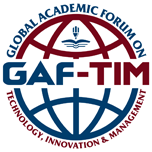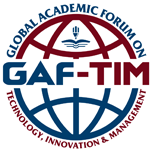Impact of AI TRiSM on Knowledge and Decision Making for Business Executives in the Education Industry
DOI:
https://doi.org/10.54489/ijtop.v3i2.290Keywords:
Artificial intelligence, Trust, Risk , Security, Knowledge, Decision making, educationAbstract
Artificial intelligence, also referred to as AI, allows operations to run efficiently, gathers important and relevant data, and self-analyses trends for accurate decision making. This research paper focuses on exposing the impact of AI TRiSM in knowledge and decision making for business executives in the education industry. The objectives are to investigate the impacts of AI TRiSM on business executives in knowledge and decision making in the education industry, and to explore how we can maximize the positive impacts and minimize the negative impacts of AI TRiSM on business executives in knowledge and decision making in the education industry. The problem to be identified it that although AI carries many advantages, not many are fully aware of its capabilities. The hypotheses to be investigates is that H1: E-education tools will improve student engagement and enhance learning outcomes compared to the traditional method of learning, and H2: Business executives and educators’ workload will be reduced because of AI introduction to the education industry. Various research questions will be asked to state the truthfulness and accuracy of both hypotheses. Secondary and primary data has been gathered to share sufficient insights around the topic. AI is all about humanizing technology. However, as much as we want to replicate human intelligence, AI is still at its infancy to think and feel like a human. AI TRiSM guarantees the robustness, fairness, reliability, effectiveness, privacy, and data protection of AI models. Many companies have adopted AI such as Google, Netflix, and Tesla. In the education industry, the introduction of AI has several advantages such as personalized learning and automation of tasks. However, it does have its disadvantages such as high cost and privacy concern. Several cases around the globe (UAE, China, and USA) have been reflected as well to highlight how AI has been applied in education. Through primary data gathering, 2 interviews have been conducted. 1 from the student perspective, and the other from the educator perspective, and both were asked 6 questions during the interview. From those responses, data was analyzed. Limitations of conducting this research paper has been addressed, followed by recommendations of adopting AI technologies, and finally a conclusion that summarizes the whole research paper and reflects on the accuracy of both hypotheses stated.











